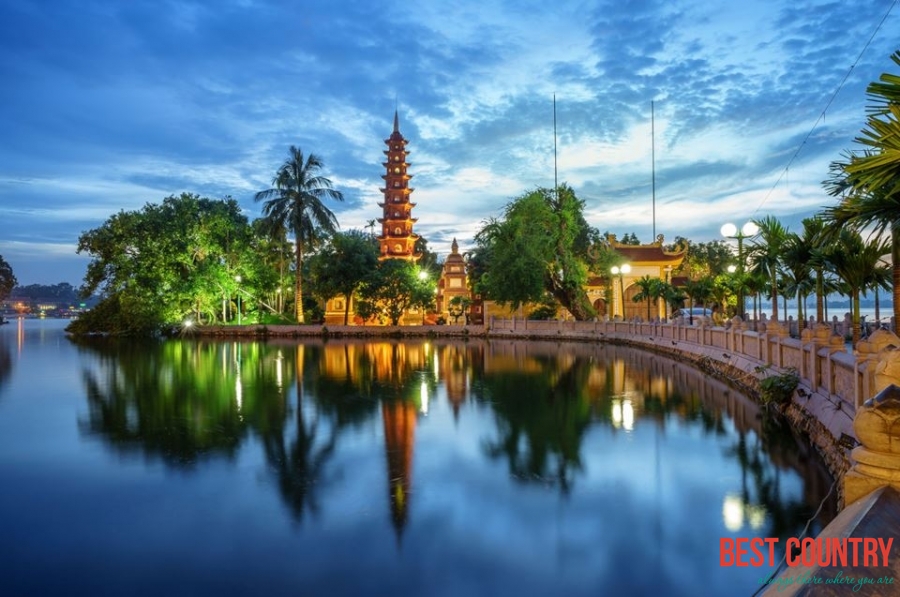The oldest and one of the most attractive capital cities in Southeast Asia, Hanoi exudes a rare sense of gracious charm and timelessness. At its core exists a 600-year-old ancient quarter, augmented by a century-old colonial city. Today, the rich cultural heritage of both blends in perfect harmony with growing modernization, as Hanoi claims its position as the heart of Vietnam.
Hanoi is the capital of Vietnam
Hanoi, the “City within the River’s Bend,” was founded by Emperor Ly Thai To in AD 1010, near Co Loa, the ancient capital of the first Viet state dating back to the 3rd century BC.
 Ly Thai To structured this city, then known as Thang Long, around the massive citadel. To the east of this, a settlement of guilds was established to serve the needs of the royal court. By the 16th century, this area had developed into Hanoi’s celebrated Old Quarter.
Ly Thai To structured this city, then known as Thang Long, around the massive citadel. To the east of this, a settlement of guilds was established to serve the needs of the royal court. By the 16th century, this area had developed into Hanoi’s celebrated Old Quarter.
The arrival of the French in the 19th century marked a period of reconstruction, as they tore down parts of the citadel and some ancient temples to make way for the new European quarter.
However, this cultural vandalism was compensated for, to a large extent, by the magnificent colonial architecture they bequeathed the city. During the first Indochina War, the city’s central districts escaped largely unharmed, and subsequently, in 1954, Hanoi was proclaimed the capital of independent Vietnam.
Sadly, this was not the end of its violent history as it was then plunged into the conflict-ridden years against the US. Hanoi entered the 21st century a little run down yet structurally sound despite the years of warfare. The Opera House is still grand, as is the Sofitel Metropole Hotel.
Today, Hanoi is emerging as an elegant, cultured, and affluent city, where museums and galleries coexist with chic shops and fashionable restaurants.
One can wander, in a few minutes, from the narrow streets of the Old Quarter to the imposing mansions and buildings lining the leafy boulevards of the former French Quarter.
Hanoi’s past has also ensured a superb culinary legacy, where French and Chinese cuisines blend marvelously with the Viet traditions. The same is true of Hanoi’s lively arts scene, which is among the most sophisticated in Southeast Asia.
Geography of Hanoi
Hanoi is located in the Red River Delta, in the center of North Vietnam. It is encompassed by Thai Nguyen, Vinh Phuc provinces to the north, Hoa Binh and Ha Nam to the south, Bac Giang, Bac Ninh and Hung Yen provinces to the east, Hoa Binh and Phu Tho to the west.
Hanoi means "the hinterland between the rivers" (Ha: river, Noi: interior). Hanoi's territory is washed by the Red River (the portion of the Red River embracing Hanoi is approximately 40km long) and its tributaries, but there are some other rivers flowing through the capital, including Duong, Cau, Ca Lo, Day, Nhue, Tich, To Lich and Kim Nguu.
Hanoi Tourism
Throughout the thousand years of its eventful history, marked by destruction, wars and natural calamities, Hanoi still preserves many ancient architectural works including the Old Quarter and over 600 pagodas and temples.
Famous sites include the One Pillar Pagoda (built in 1049), the Temple of Literature (built in 1070), Hanoi Citadel, Hanoi Opera House, President Ho Chi Minh's Mausoleum...
Hanoi also characteristically contains 18 beautiful lakes such as Hoan Kiem Lake, West Lake, and Truc Bach Lake..., which are the lungs of the city, with their surrounding gardens and trees providing a vital source of energy.
Many traditional handicrafts are also practiced in Hanoi including bronze molding, silver carving, lacquer, and embroidery.
Hanoi has many famous traditional professional handicraft villages such as Bat Trang pottery village, Ngu Xa bronze casting village, Yen Thai glossy silk...